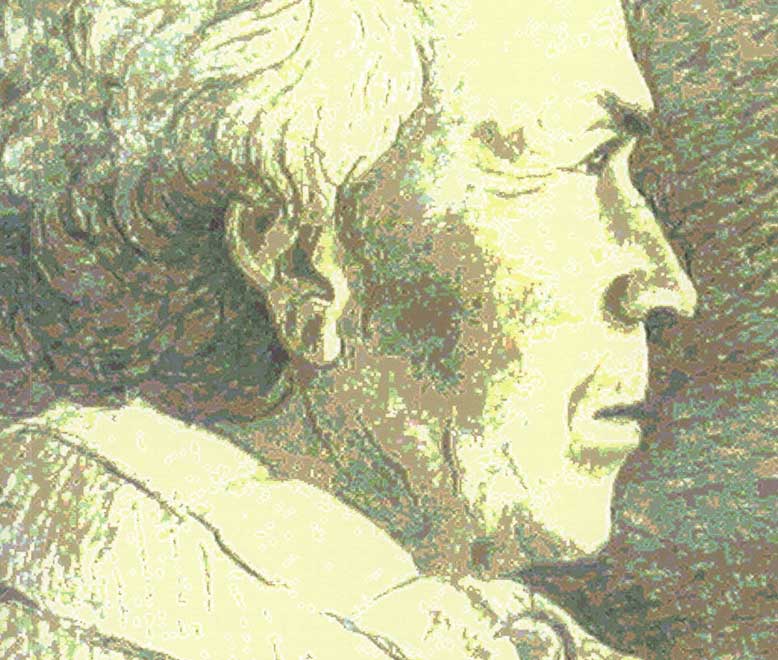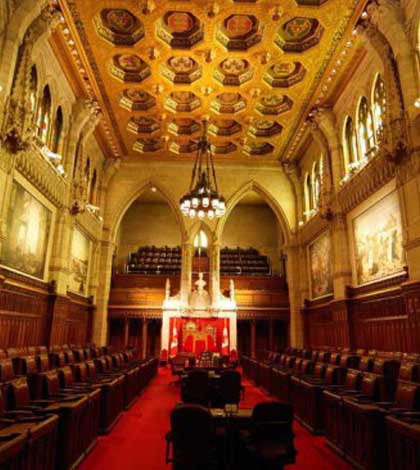Balancing Two Worlds: Jean-Baptiste Assiginack and the Odawa Nation, 1768-1866’ is a new book published by Dr. Cecil King, an Odawa from Wikwemikong First Nation and an internationally recognized educator.
Jean-Baptiste Assiginack is a controversial hero. He was an Odawa war chief, an interpreter, an orator and a spokesperson but he is largely remembered on Manitoulin for endorsing and signing the 1862 treaty. By that one act, performed in his mid 90s, he was transformed in the view of many of his people from a respected chief to a traitor.
‘Balancing Two Worlds’ is actually two compelling stories. It’s a fascinating biography of a forgotten hero of the War of 1812 and a history of the Anishinabek people as they navigated contact with the strangers who came to their territories. This history is told in the unique voice of the Anishinabek people, who though credited with saving the country during wars and saving the lives of explorers, traders and settlers in times of peace are rarely heard.
‘Balancing Two Worlds’ is organized chronologically, starting with Machtawin, Beginnings and culminating 10 chapters later with Kitchi Yezhimigowin, The Big Betrayal. Machtawin immediately captures the reader. ‘To begin the story of Assiginack, I am going to take you on a journey into my world, the world of the Odawak.’
Recognizing that in order to understand Assiginack, it’s necessary to understand the Anishinabek people, Dr. King provides generous background information. He explains the origins, worldview, customs and relationships of the Anishinabek. Subsequent chapters describe encounters with the French, English and Americans. This is history told from an entirely new and extremely compelling angle—an Anishinabe speaking for the Anishinabek people.
Jean-Baptiste Assiginack was born in a period of great turmoil. The French had just been defeated by the English in North America. As a boy he witnessed canoe brigades of trade goods and fighting men of many cultures and languages at Arbre Croche and Mackinac. He was chosen to learn the language of the English so that he would be able to speak in council on behalf of his people when dealing with the English and the Americans. He not only mastered English but became a persuasive multi-lingual orator.
Cecil King was born and spent his early years in Buzwa on the Wikwemikong Peninsula. He began his formal education at the Buzwa Indian Day School and completed it with a PhD at the University of Calgary. He has spent more than 50 years in education as a teacher, professor, researcher, consultant and teacher of teachers. He has developed Ojibwe Language Programs in Ontario, Saskatchewan, Manitoba, Minnesota, Chicago and California and has produced an 8,000 word Ojibwe dictionary.
Like Assiginack, Dr. King has lived a life on paths between old and new worlds. Dr. King acknowledges that Assiginack was a controversial name when he was growing up in Wikwemikong. This controversy seems to have inspired him to unravel the truth about the chief. He started researching in 1988 at the Newberry Library in Chicago. The unravelling was a monumental task. I’ve personally encountered at least three men known as Assiginack or Blackbird in official records and that fact alone has deterred me from investigating the chief too deeply. Nevertheless King has followed Jean-Baptiste’s trail from Arbre Croche, to Mackinac, Drummond Island, St. Joseph’s Island, Coldwater, Wikwemikong and Manitowaning.
Most people will be astonished to realize that when Assiginack finally settled on Manitoulin he was about 71 years of age and he was still working for the Indian Department at the age of 79. Despite his age, I’ve found that he appears more regularly than any other chief or Anishinabe in the records of the Jesuits, Anglicans and government officials. He was a force to be reckoned with his entire life.
Dr. King has managed to uncover countless details about the exploits and adventures of Assiginack and other Anishinabek and he’s assembled them into an unforgettable narrative. He has dispelled the misconceptions of the past and brought a new understanding of the chief. He provides an excellent explanation of how the Odawak were drawn into the War of 1812 and how the people at the country of the crossroads of Lakes Michigan, Huron and Superior were affected and acted.
I recognize and applaud what has clearly been decades of research. A biography of an Anishinabe chief is an extremely difficult undertaking. Just sorting out the Assiginack and Blackbird relations and non-relations is problematic. Dr. King has obviously scoured countless sources and found, transcribed and incorporated them into this book. ‘Balancing Two Worlds’ provides an amazing story of an almost forgotten war chief and brings an important period of history to life.
For those who thought Assiginack was simply a township named for a chief, reading ‘Balancing Two Worlds’ will give you a new appreciation of the chief and the Anishinabek people.
I hope this book inspires a new generation of researchers to continue to research and to continue to unravel this large, complex and often confusing family, and to write in as an engaging manner as Dr. King has.
I couldn’t resist asking Dr. King what he’s working on now. He’s working on his memoirs. “I was raised by my grandparents and a very traditional woman we called Kokwehns,” he says. “I was brought up in a life that really was in two worlds. I want to provide a picture of reserve life in the 1930s-1950s when everyone contributed to community life.”
I highly recommend ‘Balancing Two Worlds, Jean-Baptiste Assiginack and the Odawa Nation, 1768-1866’ not only to learn about the chief but to discover First Nation, North American and Manitoulin history, and the War of 1812.
‘Balancing Two Worlds: Jean-Baptiste Assiginack and the Odawa Nation, 1768-1866’ was published in 2013 by Dr. Cecil King. It is 329 pages long, and contains illustrations, notes, references, and a glossary. It is available at The Manitoulin Expositor bookstore in Little Current.
EDITOR’S NOTE: Shelley J. Pearen is the author of the popular books ‘Four Voices, The Great Manitoulin Island Treaty of 1862’ and ‘Exploring Manitoulin.’
Shelley J. Pearen





